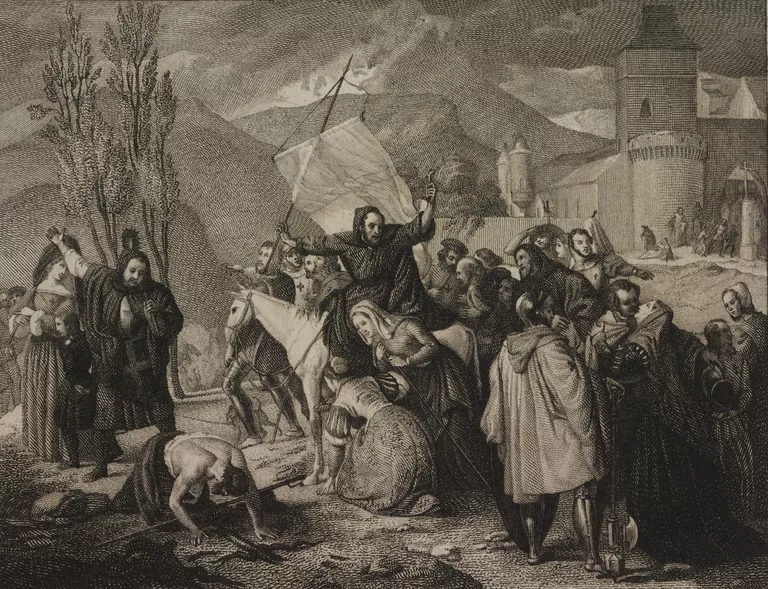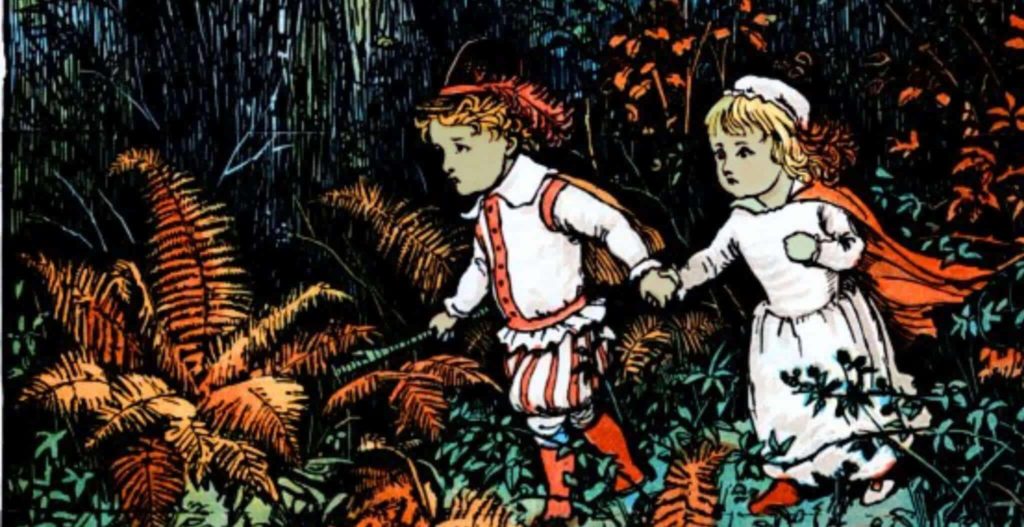Last updated on July 21st, 2022 at 10:43 pm
On July 15th, 1099, the city of Jerusalem fell to an army that had been besieging it for six weeks. This was a force of over 10,000 Christian crusaders from Western and Central Europe to reconquer the Holy Land from the Muslim powers who had controlled it for over 400 years.
In the hours that followed, a brutal massacre of tens of thousands of the Muslim and Jewish inhabitants of the Holy City was carried out by these supposed soldiers of god.
Then the crusader leaders went to the Temple Mount to pray and celebrate the recapture of the holiest of cities for the Christian cause.
Amongst all the blood and corpses which filled the streets that summer day in 1099, there wandered a man whose story has become fabled over time. This was Peter the Hermit, believed to have been central to the preaching of the First Crusade and the widespread bloodshed and atrocities that accompanied it.

The Early Life of Peter the Hermit
The details of Peter the Hermit’s life before the First Crusade are highly contested. He is believed to have been born around 1050, most likely in the Auvergne region of central France.
He entered the religious life and was a priest in the town of Amiens by the 1080s or 1090s. Much of our knowledge of his earlier years comes from the writings of Anna Komnene, the daughter of the Byzantine emperor, Alexios I Komnenos, and a contemporary of the events she describes in her Alexiad, a history of her father’s reign which overlapped with the First Crusade.
Anna claimed that Peter had attempted to embark on a pilgrimage to the Holy Land in the years before the crusade but had been stopped on his journey by the Seljuk Turks, who had come to control the region around modern-day Turkey and the Levant.
They may have attacked him, and this, combined with his failure to make it to Jerusalem, made him a zealous supporter of the crusades.
The Preaching of the First Crusade
The crusades came about owing to developments in the Eastern Mediterranean in the late eleventh century. The Byzantine Empire had been losing ground there since the rise of Islam in the seventh century.
However, the eleventh century witnessed a new regional power, the Seljuk Turks. These threatened Constantinople itself, the Byzantine capital. Thus, the Byzantine emperor, Alexios I Komnenos, appealed to the powers of Western Europe to send aid to the east.
Alexios’s motives were self-interested, as he wanted the Christians of Western and Central Europe to attack his enemies. Still, he promoted the idea as a way of Christendom uniting to recover the Holy Places in the Levant, above all the city of Jerusalem.
He explained to his western correspondents that these regions were being blocked to Christians by the Turks. Alexios’s argument won supporters in the west.
In particular, the head of the Roman Catholic Church, Pope Urban II, was convinced. In November 1095, he preached the idea of a crusade at a religious council held at Clermont in Peter’s native region of Auvergne in France.
Within days prominent noble lords across France were signaling their intention to travel to the Holy Land to reclaim Jerusalem for the followers of Christ.
The People’s Crusade
Peter emerged as a prominent preacher of the Frist Crusade in France in the weeks following Urban’s announcement in late 1095. Indeed he may have been present at Clermont when the Pope preached it himself. He is believed to have been a dynamic and populist preacher who appealed to the millenarian thought of Christians at the time.
This was a popular strand of religious belief in the High Middle Ages, where people had come to believe that because a millennium had passed since Christ’s birth, the Last Days and the Kingdom of Christ were close at hand.
Thus, as the weeks went by, Peter gathered a large following from amongst the peasants and commoners of France. These differed from the main crusade, composed of nobles, knights, and soldiers.
By contrast, by the spring of 1096, Peter was proceeding through Western Europe with a growing body of thousands of peasants as he moved from region to region preaching the crusade.
This has become known variously as the People’s Crusade, the Peasants Crusade, and the Crusade of the Paupers. By early April, Peter had moved to Germany with his followers.
Here he was responsible for one of the most notorious aspects of the First Crusade, the massacre of some 2,000 Jews in the Rhineland region of western Germany.
Jewish pogroms of this kind were becoming an all too common aspect of European life as Anti-Semitic sentiments increased. After this sordid episode, Peter set out from Germany overland across Central Europe, eventually arriving in Constantinople, the name for Istanbul at the time, in the late summer of 1096.
The journey, though, had been hazardous.
At one stage, Peter’s followers numbered upwards of 40,000 peasants. But owing to inadequate supplies and attacks along the way, many had abandoned the Peasant’s Crusade so that when he reached Constantinople, Peter’s followers were reduced to less than 30,000.
At this stage, Emperor Alexios quickly ferried them across the Bosporus to western Turkey, anxious to have this violent mob sent on their way. And it was here in Anatolia in west Turkey that the People’s Crusade ultimately ended.
On October 21st, 1096, the enormous gathering was attacked by a Turkish force led by Sultan Kilij Arslan ibn Suleiman near the village of Dracon. The Battle of Civetot, as it is known today, was a complete rout, with perhaps as many as 20,000 of Peter’s followers massacred by the Turkish army.
Those who survived did so by fleeing. Peter was amongst them and survived, but his popular crusade was over.
The First Crusade, Later Life, and Death
Peter fled back to Constantinople in the aftermath of this crushing defeat. There he joined with some of the real military crusader forces, the heavy cavalry and knights of the Norman and German lords of Europe.
With these, he journeyed on to the Holy Land in 1097. He was probably present at the siege and capture of the city of Antioch in the summer of 1098.
Despite the absolute catastrophe which his People’s Crusade had turned into the leaders of the Crusade, Godfrey of Bouillon and Baldwin of Boulogne appear to have given him some responsibilities as a preacher and as an administrator and diplomat, sending him as an emissary to the Muslim lords of the Holy Land.
However, unlike these lords, who went on to establish themselves as the rulers of the Crusader kingdoms, which were established following the success of the First Crusade, Peter did not remain in the Holy Land. Instead, following the bloody capture of Jerusalem in 1099, he returned to Western Europe.
He largely disappeared from the historical record after that. He is believed to have lived until 1131 as the Prior of the church of the Holy Sepulchre in France, though this is not certainly known.
Despite the uncertain details of so much of his life, later tradition held that Peter the Hermit was pivotal in fostering the First Crusade and had even been visited by Jesus in a vision.
The reality is that he led tens of thousands of zealous peasants on a wayward mission of violence across Europe, at the end of which most of them never made it. Such was the People’s Crusade which Peter the Hermit led.

